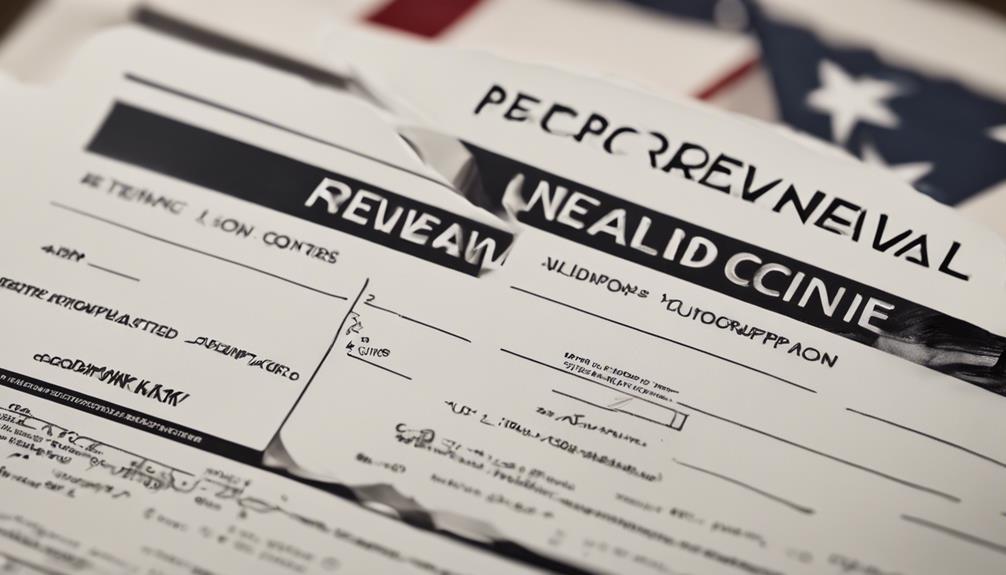Have you ever wondered about the intricate differences between federal and state permits?
The distinctions go beyond mere paperwork and extend to the very core of regulatory oversight.
The nuances in jurisdictional authority and compliance obligations can significantly impact how businesses operate and how environmental concerns are addressed.
Understanding these variations is not just a matter of legal technicalities; it can determine the success or failure of your project.
Let's explore the essential variances between federal and state permits and how they can shape your endeavors.
Key Takeaways
- Federal variances adhere to national laws like the Clean Water Act, while state variances comply with state-specific regulations.
- Federal permits prioritize national standards, whereas state permits focus on compliance with state regulations.
- Federal approval processes for permits are lengthier due to oversight, while state permits are processed efficiently at the local level.
- Appeals for federal permits go through federal channels, while state permit appeals are typically handled at the state level.
Key Differences in Scope
When considering the key differences in scope between federal and state permits, it becomes evident that the regulatory landscape varies significantly based on jurisdiction. Federal variances authorize environmental permits under national laws like the Clean Water Act, setting standards that states must adhere to.
On the other hand, state variances are governed by state-specific regulations and statutes, allowing for more tailored approaches to environmental management within state boundaries. Federal variances are granted by federal agencies such as the EPA, involving more complex procedures due to national regulations and oversight.
Conversely, state variances are issued by state environmental agencies or relevant departments, focusing on addressing specific state-level concerns and conditions. While federal variances may have broader implications for interstate issues or national environmental goals, state variances concentrate on localized considerations based on state laws and priorities.
Understanding these distinctions is crucial for navigating the varied landscape of environmental permitting.
Variances in Application Process

Federal and state variance applications differ in their focus and criteria, shaping the processes for obtaining environmental permits in distinct ways. When applying for a federal variance, the focus is primarily on meeting the requirements set forth in the Clean Water Act provisions and specific criteria outlined by the EPA. On the other hand, state variance applications are influenced by individual state regulations and statutes governing the permitting process, which may vary from state to state. The application process for federal variances follows the guidelines set in 40 CFR § 124.63, ensuring efficient handling and decision-making. In contrast, state variance applications typically require compliance with state environmental regulations and may have specific criteria for approval, which can include considerations related to neighboring properties.
| Federal Variances | State Variances |
|---|---|
| Clean Water Act provisions | Compliance with state regulations |
| Specific EPA criteria | State-specific approval criteria |
| Adherence to 40 CFR § 124.63 | Managed by state agencies/local authorities |
| EPA oversight | Variances based on state laws |
Regulatory Authority Variances
Regulatory oversight for permit variances differs significantly between federal and state authorities, impacting the processes and criteria involved in obtaining environmental permits. When considering regulatory authority variances, it's vital to note:
- Federal Oversight: Federal permits fall under agencies like the EPA, adhering to federal regulations such as 40 CFR § 124.63 for variances. These variances must align with federal environmental laws like the Clean Water Act, influencing national standards.
- State Oversight: State permits are managed by state environmental agencies, following state-specific variance processes. Variance criteria for state permits may differ, focusing on compliance with state environmental regulations and addressing local or regional environmental concerns.
- Diverse Regulatory Focus: Federal variances prioritize adherence to overarching national environmental standards, while state variances concentrate on localized environmental issues. Understanding these differences is crucial for navigating the varying regulatory landscapes of federal and state permit variances effectively.
Compliance Requirements Variation

Understanding the nuances in compliance requirements between federal and state permits is essential for ensuring environmental responsibility and regulatory adherence. When comparing federal and state permits, it becomes evident that compliance requirements vary significantly. Federal permits often impose stricter compliance standards to uphold national environmental norms, while state permits may introduce additional criteria based on specific state regulations. This variation in compliance requirements can impact the level of environmental protection and regulatory oversight for different projects or activities.
To illustrate the differences more clearly, let's examine a comparison between federal and state compliance requirements:
| Aspect | Federal Permits | State Permits |
|---|---|---|
| Stringency | Stricter compliance standards based on national norms | Compliance criteria influenced by state regulations |
| Uniformity | More uniform requirements across different regions | Variations based on state-specific regulations |
| Additional Regulations | May include comprehensive national environmental standards | Might integrate specific state-level requirements |
Timeframes for Approval Differences

For a clearer grasp of the differences in approval timeframes between federal and state permits, consider the following insights on processing durations.
- Federal permit variances often involve complex review processes and federal agency oversight, leading to longer approval timeframes compared to state permits.
- State permit variances are typically processed more efficiently at a local level by state agencies, resulting in shorter approval timeframes.
- Federal permit variances may require additional documentation and compliance measures, extending approval timelines, while state permits benefit from familiarity with local regulations and streamlined review procedures.
When comparing federal and state permit approval timeframes, it's evident that federal permits could take several months to a year for approval, whereas state permits are usually processed within a few weeks to a couple of months. Understanding these differences is crucial when navigating the permitting process. For a more detailed overview, refer to the fact sheet provided.
Variances in Renewal Procedures

When renewing variances in permits, consider the specific requirements and processes for federal and state permits to ensure compliance and efficiency. Federal permits may entail additional documentation during renewal, such as updated environmental impact assessments. On the other hand, state permits might have distinct renewal processes that mandate adherence to state-specific regulations. To help you grasp the variances better, let's compare the renewal procedures for federal and state permits in the table below:
| Federal Permits | State Permits |
|---|---|
| Additional documentation needed | Compliance with state regulations |
| Updated environmental assessments | Different renewal processes |
| Specific federal requirements | State-specific renewal criteria |
| Renewal timelines | State regulatory compliance |
| Potential public consultations | Variances based on state laws |
Understanding these differences can streamline your renewal process and ensure that you meet all the necessary criteria. By being aware of the variations in renewal procedures between federal and state permits, you can navigate the process more effectively.
Conclusion
In conclusion, navigating the variances between federal and state permits is like dancing between two different tunes. Each has its own rhythm and rules, but understanding these differences is crucial for compliance and successful project approval.
By recognizing the distinct scopes, processes, and authorities of federal and state permits, you can harmonize your efforts and move forward with confidence in your environmental compliance journey.